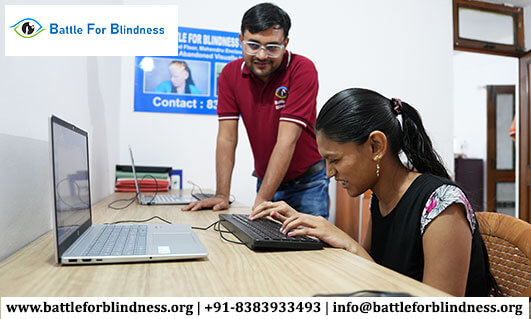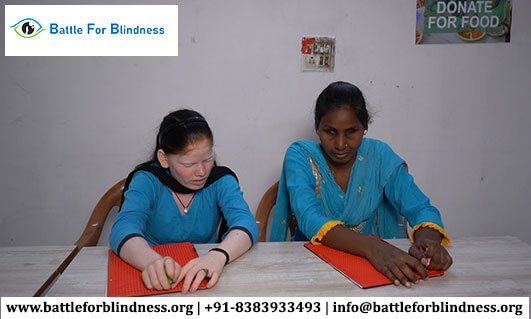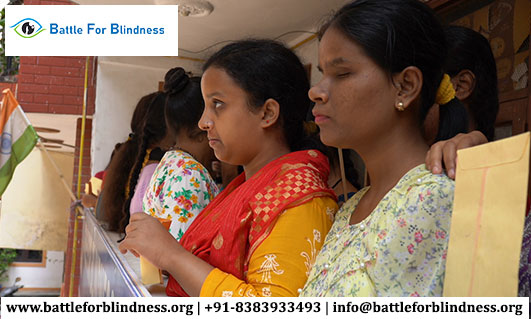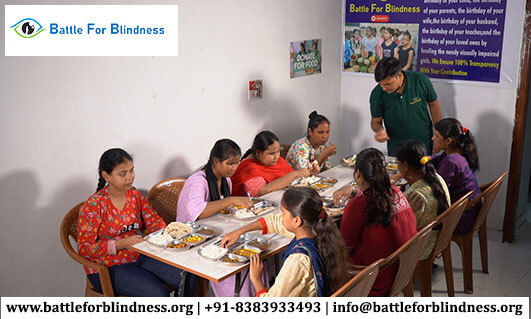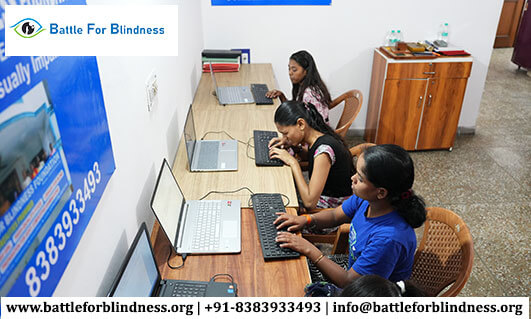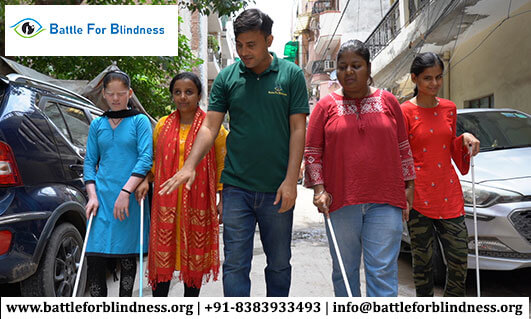
In today’s world, the fight for dignity and inclusion of visually impaired girls is more critical than ever. These girls, often marginalized, face multiple barriers in their quest for equal opportunities in education, employment, and society at large. However, by raising awareness, driving advocacy, and implementing inclusive policies, we can work toward a more equitable future where visually impaired girls not only survive but thrive.
The Challenges Faced by Visually Impaired Girls
Visually impaired girls encounter a range of unique challenges that make their path to equality more difficult. Limited access to quality education, social stigma, lack of accessible infrastructure, and employment discrimination are just a few of the obstacles they face. These challenges are further exacerbated by cultural perceptions that hinder their empowerment, making it essential to address these issues head-on through advocacy efforts.
Why Advocacy is Crucial for Visually Impaired Girls
Advocacy plays a central role in raising awareness about the rights and needs of visually impaired girls. It ensures that their voices are heard and that societal attitudes change, promoting dignity, respect, and inclusion. Strategic advocacy campaigns can help to dismantle discriminatory practices and create opportunities for these girls to access the same educational, employment, and social opportunities as their peers.
Effective Advocacy Strategies for Inclusion
-
Raising Awareness Through Education and Awareness Campaigns
Creating public awareness about the barriers faced by visually impaired girls is the first step toward promoting inclusion. Organizing campaigns, workshops, and outreach programs can highlight the importance of inclusive education, accessible public spaces, and social inclusion. Digital platforms, especially social media, can serve as powerful tools for spreading messages of equality and inspiring positive change. -
Policy Reform and Legal Advocacy
Advocating for policy reform is crucial for ensuring long-term systemic change. Laws that support the rights of people with disabilities should be enforced and strengthened. Additionally, inclusive educational policies should be put in place, guaranteeing that visually impaired girls receive equal opportunities in schools, colleges, and beyond. Legal advocacy is necessary to challenge discrimination and advocate for better infrastructure that accommodates the needs of visually impaired individuals. -
Creating Accessible and Inclusive Educational Resources
Visually impaired girls should have access to the same educational resources as their peers. Implementing accessible teaching methods, such as braille textbooks, audio materials, and digital platforms designed for visual impairments, can drastically improve learning experiences. Moreover, training teachers to adapt to the needs of visually impaired students ensures that they can provide meaningful and inclusive education. -
Promoting Social Inclusion and Community Support
Building supportive communities for visually impaired girls is vital. Advocacy efforts should aim to foster environments where these girls are respected, encouraged, and given equal opportunities to participate in social, cultural, and extracurricular activities. Peer support programs, mentorships, and community-based initiatives can help visually impaired girls develop confidence, improve social skills, and reduce the stigma surrounding their disabilities. -
Encouraging Economic Empowerment and Employment Opportunities
One of the most important aspects of inclusion is access to equal employment opportunities. Advocacy should focus on reducing workplace discrimination and promoting inclusive hiring practices. This can include training employers on how to make workplaces accessible, as well as creating employment opportunities that cater specifically to visually impaired girls’ skills and talents. Encouraging entrepreneurial opportunities can also help them achieve financial independence. -
Collaboration with NGOs and International Organizations
Collaboration with NGOs, social enterprises, and international organizations dedicated to the rights of people with disabilities can amplify advocacy efforts. Partnerships can lead to a stronger network of support and provide resources for greater impact. These organizations can also help amplify local advocacy campaigns to reach a wider audience.
The Role of Families, Communities, and Individuals in Advocacy
While institutional and organizational efforts are vital, the support of families and communities is equally essential. Families play a pivotal role in ensuring that visually impaired girls are empowered from an early age, advocating for their education and well-being. Communities can foster a culture of inclusion and provide the emotional support necessary for these girls to succeed. Individuals, whether teachers, peers, or neighbors, can help break down barriers by challenging biases and being allies in the movement for equality.
Conclusion: A Vision of a Better Future for Visually Impaired Girls
A vision of equality for visually impaired girls is achievable, but it requires concerted effort, commitment, and collaboration from all sectors of society. By raising awareness, promoting inclusive policies, advocating for accessible education, and ensuring equal opportunities in the workforce, we can empower visually impaired girls to live dignified, independent lives. The future holds promise, but it is up to all of us to actively work towards creating an inclusive society where every girl, regardless of disability, can reach her full potential.
